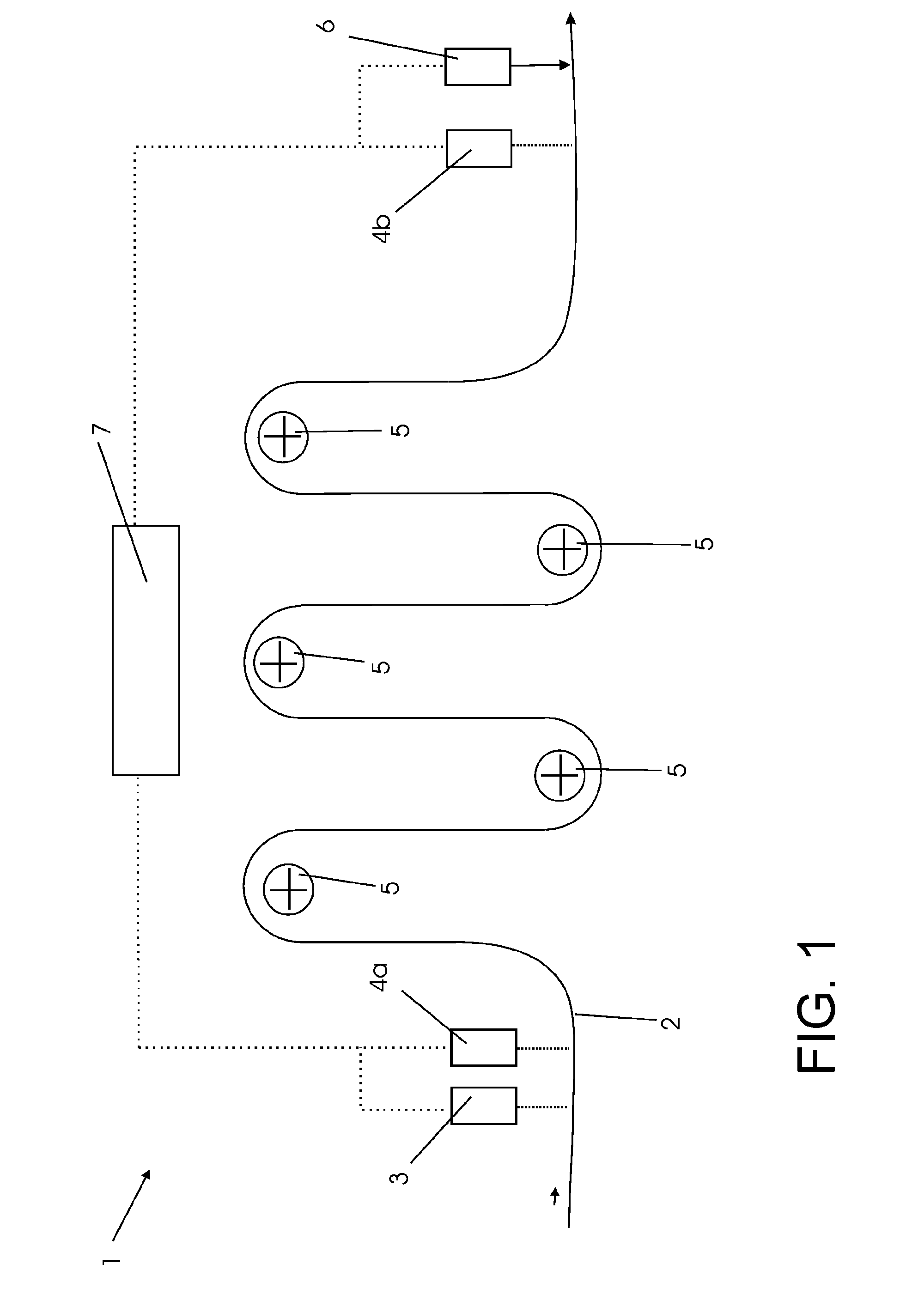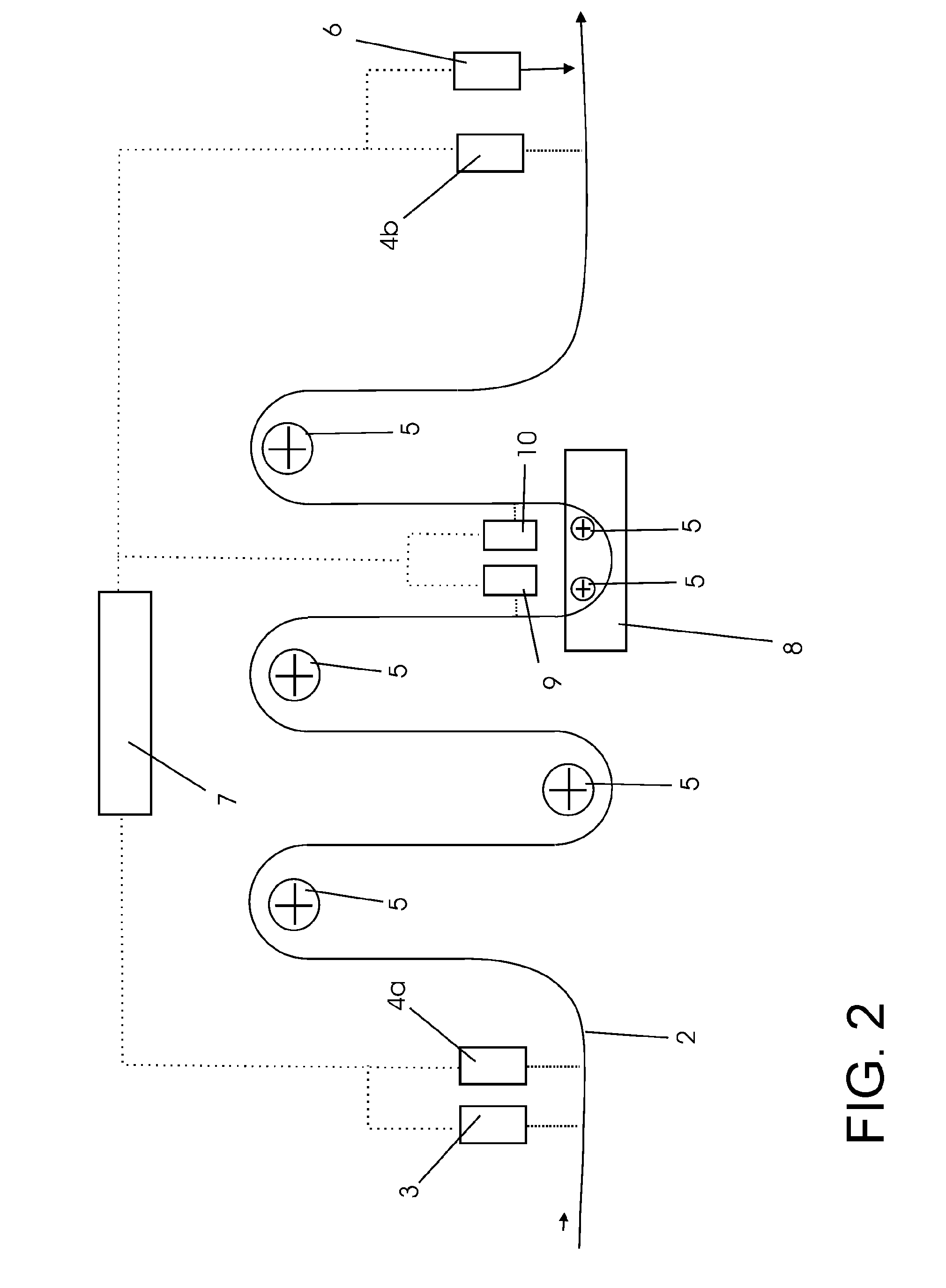Apparatus and method for tracking defects in sheet materials
a technology of sheet materials and apparatus, applied in the field of apparatus and method for tracking defects in sheet materials, can solve the problems of difficult to reliably and consistently determine, by calculation, the expected location of material defects downstream in processing, and the inability to determine the position of material defects with certainty, etc., to achieve the effect of easing the burden on the apparatus, reducing the burden on the memory unit, and reducing the cost of the method
- Summary
- Abstract
- Description
- Claims
- Application Information
AI Technical Summary
Benefits of technology
Problems solved by technology
Method used
Image
Examples
Embodiment Construction
[0072]FIG. 1 shows a sheet material 2, which is guided through an apparatus 1 for the marking, detection, and processing of a material defect in a sheet material. The sheet material 2 is a steel strip. The apparatus 1 further comprises an optical sensor 3, for example a line scanning camera, which is designed for the detection of defects, such as micro-cracks, in the surface of the sheet material 2.
[0073]Downstream of the optical sensor 3 in the direction of run of the strip is a first marking sensor 4a, which is a laser scatter light measuring device, designed in such a way as to carry out what is referred to as the LSA process.
[0074]The apparatus 1 further comprises a plurality of deflection rollers 5, around which the sheet material 2 is guided. For the detection of the position of the material defect, a second marking sensor 4b is put into arrangement, which is likewise designed as a laser scatter light measuring device.
[0075]Following in the direction of run of the sheet, arran...
PUM
| Property | Measurement | Unit |
|---|---|---|
| length | aaaaa | aaaaa |
| height | aaaaa | aaaaa |
| length | aaaaa | aaaaa |
Abstract
Description
Claims
Application Information
 Login to View More
Login to View More - R&D
- Intellectual Property
- Life Sciences
- Materials
- Tech Scout
- Unparalleled Data Quality
- Higher Quality Content
- 60% Fewer Hallucinations
Browse by: Latest US Patents, China's latest patents, Technical Efficacy Thesaurus, Application Domain, Technology Topic, Popular Technical Reports.
© 2025 PatSnap. All rights reserved.Legal|Privacy policy|Modern Slavery Act Transparency Statement|Sitemap|About US| Contact US: help@patsnap.com


